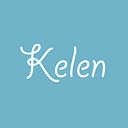
Could you introduce yourself?
My name is Walid Farouk. I am a visual artist born and raised in Om Durman, Sudan, in 1976 from a Sudanese mother and an Egyptian father.
I graduated from the Fine Arts Faculty of Sudan University in 2000, and moved to Cairo in 2005 where my work focused on fashion design and visual art. Realising the gap that separates local from foreign populations in Cairo, I founded Nabta Art Center in 2011 with fellow Sudanese artists from the diaspora, an open art space for artists and non-artists alike, from Egypt, the Middle East, Sudan, Africa and Europe prompting dialog through art. Based in Istanbul since 2015, my art practice has shifted from painting to mixed media and photography.
What triggered the desire to do this job?
As far as I can remember I have been drawing in the dirt. One day, I was maybe 9 years old, my father invited an artist friend at home so he would paint a fresco. The man started to paint colorful birds and trees, then left his painting material to continue the work the next day. As soon as he was gone, I dipped the brushes in the paint -it was a great feeling — and I finished the work. My father entered the room. He was very surprised to see the finished fresco as he hadn’t seen his friend come back. When he realised it was I who had done the job, he rushed me in a microbus to go shopping for colors.

As an artist, how would you define yourself?
Coming from a dual Sudanese and Egyptian culture, I have always been confronted with questions related to ethnic and geographical diversity. Considered white by blacks and blacks by whites, I am African for Arabs and Arab for Africans.
Instead of trying to resolve issues of identity and nationality, my artistic approach is to show what brings us together rather than what divides us and extracts what makes us human beings first and foremost.
Which artists do you admire? Who inspired you?
Rembrandt of course, for his technique and his mastery of light.
Van Gogh because of his very unique sense of lines, colours and the depths of his paintings which is not only technical but also very emotional. Every time I see one of his paintings, I discover a new layer of humanity.
And then of course our Sudanese masters as Ibrahim Salahi, Otaybe, Ahmed Abdelal. There is also a new generation of very promising artists in Sudan.

What do your works reflect?
Through my artwork, I seek to trigger an appreciation of the differences while provoking reflection on the shared foundation of mankind.
What motivates your creation?
My creation is motivated by the perception I have of current worldwide events.
Today, for example, in the light of the continuing increase in migration, I seek to return their faces to displaced people and to tell their individual stories so as not to reduce them to mere numbers and statistics.
It now seems to me that in the faltering world in which we live to make observations and to stimulate reflection is no longer sufficient, our role as an artist must be more constructive and must have a real impact on the world.
How do you work?
I mainly use acrylic and I often use collage. I am now trying more contemporary techniques through photography without giving up painting.
I paint mostly on canvas, large and small formats.
I try to experiment and to exploit the material I find in front of me
What is your particularity?
I guess my particularity is that I am Sudanese. Because of the economic situation, we have to be more creative to build or own material and find solutions when no material is available.

Are you in associations or collectives or other artists?
In Cairo I founded Nabta Art Center where refugees, Sudanese and Egyptian artists could meet, dialog and showcase their work.
Unfortunately, we had to close as the political situation set growing hurdles for us to pursue our work.
What are your current projects?
This year, the Sudanese People has put an end to 30 years of dictatorship that had destroyed all kinds of artistic demonstrations, technically mostly but also intellectually. My main project now is to encourage Sudanese artists in their endeavours but also to bring art to the People.
These events have been extremely intense on a personal level and have stimulated many new ideas. I need to clarify a few things before I publicize my new projects.


